Hyperion Optics supplies a range of prisms to meet UV-Visible-NIR applications, with high surface quality and tight tolerance angles. Our materials selection ranges from flint/crown glasses, fused silica, ZnSe, CaF2 etc.
For custom need, such as cemented prism or additional treatment on the surfaces, please have us assess your requirement, our engineers are always happy to assist.
Right angle prisms turn light through 90° by internal reflection from the hypotenuse, or 180° from two right angle surfaces. When the light incident angle is perpendicular to the right angle surfaces, the light will be reflected at the surface of glass/air interface.
When the input light is incident from hypotenuse surface, the light will be fully reflected in the glass / air interface at the right angle surfaces. The second total reflection occurs at next right angle surface.
Compared to regular reflective mirrors, right angle prisms are easily to be mounted; further its reliable mechanical stress has better stability and strength. Hence right angle prisms have been considered as suitable alternatives to reflective mirrors in various applications.
Hyperion Optics supplies a range of right angle prisms to meet UV-Visible-NIR applications, with high surface quality and tight tolerance angles. Our materials selection ranges from BK7, Bak4, fused silica, ZnSe, CaF2 etc.
Material tips for your application:
Hyperion Optics has full capability of processing right angle prisms based on the materials we proposed above with 3 precision levels fit your actual demand.
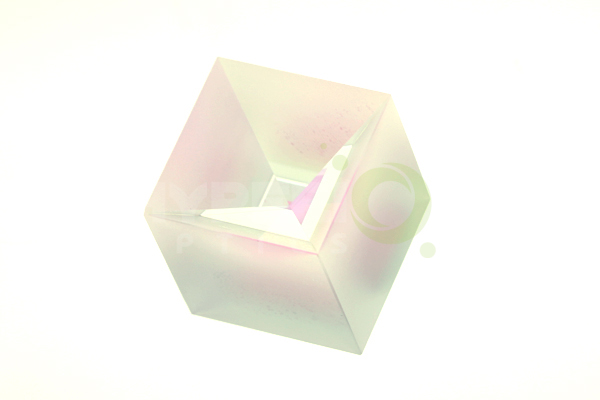
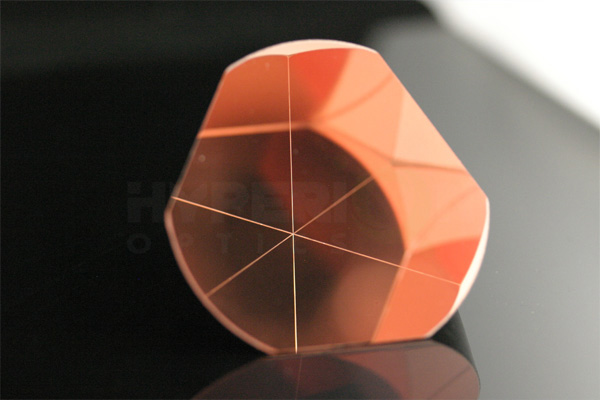
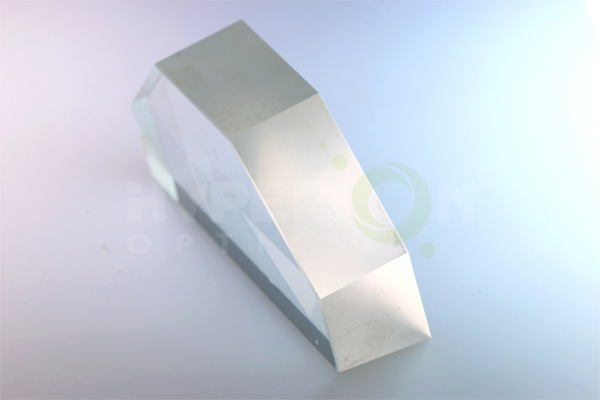
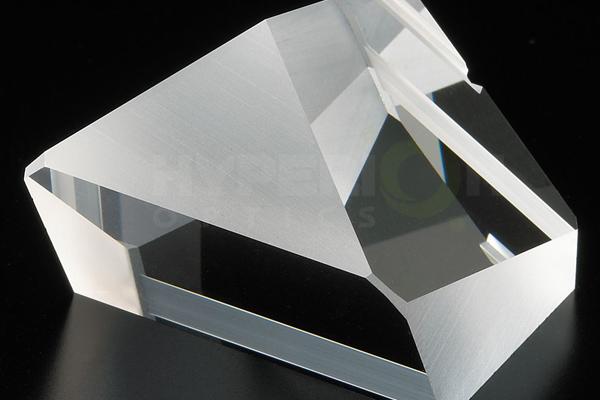
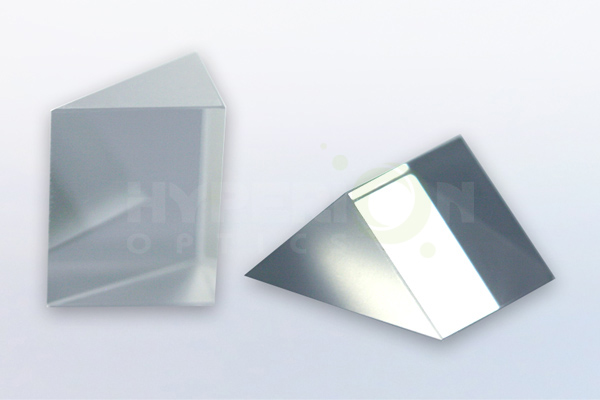
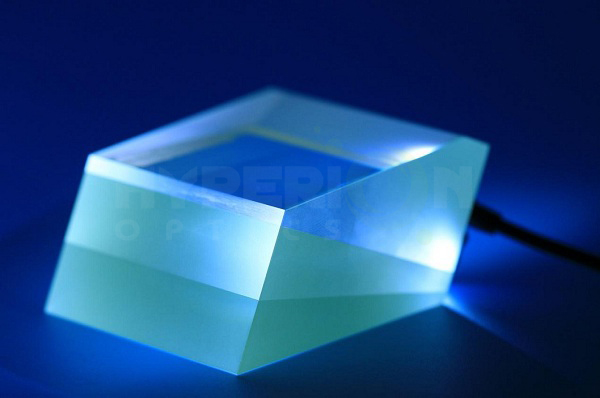
An optical prism is a transparent object which is formed by two intersecting but uneven dimensions. It is used to separate light or cause the beam to be dispersive, and the material is usually glass, crystal, etc. It is widely used in optical instruments.
According to the uses of optical prisms, it can be divided into:
1. Deviation optical prism: let light change direction through a prism, and generally a prism less inclined is called a wedge or thin prism, the achromatic Fresnel biprism can also be used for deflection(no dispersion).
2.Dispersive prism: the refractive prism of a large Angle, mainly used in spectral instruments, the main function is in refraction.
3.Reflecting prism occupies a significant position in the non-dispersive prism, it can change the direction of the light as well as the image shift. It is usually used to reduce the light consumption with full reflection.
4. Polarizing prism: to separate polarized light from non-polarized light, it is used to study some physical phenomena of polarization or to control the strong light.
5. In the microscope, a prism is also used to complement the light.
Optical prisms play many different roles in optics, and the combination of prism can be used as a beam splitter, a deflector, etc. But in most applications, only the dispersive function of the prism is used, or to change the direction of the image and the direction of beam propagation. The function of dispersion makes the prism an excellent dispersive element, the role of the prism plays in the spectrometer, spectrograph and monochromator. In many optical instruments, the prism is often used to fold the optical path to make the system shrink, and these prisms are not dispersive, such as mirror prism, inverted prism, etc.
In modern life, optical prism is widely used in digital equipment, science and technology, medical devices and other fields.
Common digital devices: cameras, closed-circuit television, projectors, digital cameras, CCD lenses and various optical devices;
Science and technology: telescope, microscope, level instrument, fingerprint, gun aiming mirror, solar energy converter and various measuring instruments;
Medical device: cystoscope, gastroscope and various laser treatment equipment.
 Call us on:
Call us on:  Email us:
Email us:  R&D Center: Aoti Street #68 Building 4A 405 International R&D park, Nanjing
R&D Center: Aoti Street #68 Building 4A 405 International R&D park, Nanjing









 English
English  cn
cn  de
de  es
es  fr
fr 


